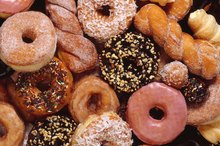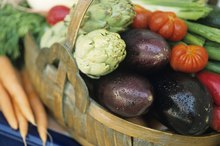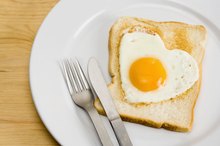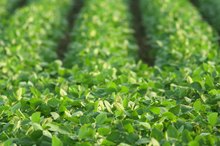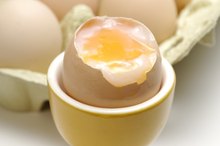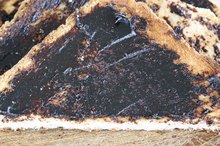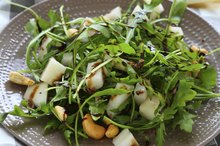Yeast-Free Meal Plan
What you eat on a yeast-free diet will depend on the reason you're following this diet and which version of the diet you choose. The most simple version involves avoiding all foods containing or potentially containing yeast, which makes sense for someone who is sensitive to or allergic to yeast. People following a yeast-free diet for the purpose of limiting yeast in their bodies due to candidiasis or yeast infections usually avoid foods that can feed yeasts as well as yeast itself, which means avoiding a wider variety of foods.
Breakfast Ideas
Many types of bread and pastries contain yeast, so skip the toast, bagels, doughnuts and other pastries at breakfast no matter which type of yeast-free diet you're following. One good choice for breakfast is eggs, perhaps mixed with nonstarchy vegetables in a scramble or an omelet. If you're only avoiding yeast, you could also have a piece of fruit to complete your meal as long as it isn't overly ripe or dried fruit. Vegetarians could have a tofu scramble instead of one made with eggs.
Lunch Possibilities
Gluten & Yeast Free Foods
Learn More
Nonstarchy vegetables are allowed on all versions of a yeast-free diet, with the exception of mushrooms. This means a salad is a good lunch choice. Be sure to top it with some form of protein -- such as tofu, lean meats, eggs, poultry or fish -- to make it a more complete meal. Just be careful with dressings, as anything containing vinegar also contains yeast.
Some versions of the candida diet require you to avoid all foods containing grains, even those not containing yeast, although other versions allow for gluten-free grains. For those simply avoiding yeast itself, a sandwich made with pita bread or a wrap is another option as long as you don't use cheese, mayonnaise or pickles.
Pair your salad or sandwich with vegetable soup, tomato soup or lentil soup to round out your meal and make it more filling.
Dinner Options
In general, you'll want to limit processed foods on a yeast-free diet. In particular, avoid processed meats, such as cold cuts, ham, bacon and sausages. Otherwise, you can base your meal around your choice of proteins. This could include a shrimp stir-fry -- minus the soy sauce if you're allergic to yeast -- or baked chicken served with grilled or roasted vegetables. Avoid corn, potatoes, sweet potatoes and mushrooms though.
Snacks Choices
Wheat-Free Meal Plans
Learn More
Those on a more restrictive yeast-free diet could snack on raw vegetables with hummus or a handful of mixed nuts without peanuts. If you're simply avoiding yeast, you could also munch on crackers or rice cakes with almond or cashew butter or an apple with a few walnuts.
Related Articles
References
Writer Bio
Based in Massachusetts, Jessica Bruso has been writing since 2008. She holds a master of science degree in food policy and applied nutrition and a bachelor of arts degree in international relations, both from Tufts University.
